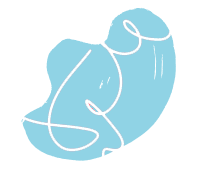
Home > Product > Ferrule Fittings > FAQ
Welcome to the most comprehensive Ferrule Fittings FAQ library curated by Perfect Engineers under the PE-LOCK brand. These FAQs address advanced buyer queries, application insights, engineering dilemmas, certification compliance, and international usage scenarios that go beyond basic installation or compatibility.


Q1. What is the maximum lifecycle of a ferrule fitting in critical systems?
With proper installation and minimal reassembly, PE-LOCK double ferrule fittings can last 15–25 years in static systems. In high-vibration or high-cycling environments, periodic inspection and ferrule replacement every 2–5 years is recommended.
Q2. Can ferrule fittings be used with soft tubing like copper or aluminum?
Yes, but ensure the ferrule material matches or is softer than the tube. For soft metals, consider single ferrule or brass versions to avoid over-gripping or tube collapse.
Q3. What’s the difference between a single ferrule, double ferrule, and bite-type fitting?
Q4. What is the function of the back ferrule in a double ferrule fitting?
The back ferrule grips the tube and provides pull-out resistance, especially important under vibration, pressure surges, and pulsation.
Q5. Can ferrule fittings be used with gas mixtures like forming gas (H₂ + N₂)?
Yes, but ensure the fitting has been leak-tested (e.g., helium test) and that the material is non-reactive with the mixture.
Q6. Are ferrule fittings compatible with peracetic acid, nitric acid, or chlorine?
Only if the right material is used. We recommend Hastelloy C276 or PTFE-coated fittings for strong oxidizers like peracetic or nitric acid. Monel or Titanium is best for wet chlorine gas.
Q7. Can I use ferrule fittings in CIP/SIP systems for pharma/food?
Yes, if using electropolished SS316L, with FDA-compliant seals and proper drainability. PE-LOCK offers fittings compatible with SIP/CIP and Class 100 packaging on request.
Q8. Do ferrule fittings resist corrosion in salt-laden or humid environments?
Standard SS316L works for most applications. For offshore, use Super Duplex, Monel, or Titanium. We also offer anti-corrosion coatings like PTFE or Xylan for extra protection.
Q9. What happens if ferrule fittings are exposed to cryogenic temperatures?
They remain functional if made of materials like SS316L, Inconel, or Monel. Ensure ferrules are not reused, and fittings are torqued at ambient conditions before cryo exposure.
Q10. Are PE-LOCK ferrule fittings suitable for steam lines?
Yes. Use SS316L or SS321 fittings rated up to 600°C. For superheated steam, follow de-rating curves and consider ferrule fatigue due to thermal cycling.
Q11. What is the vibration limit for ferrule fittings?
They perform reliably up to 50 Hz–100 Hz vibration with adequate tube support. Always install tube clamps within 15–30 cm of the fitting in vibration zones.
+91-8591096714
www.perfectqrc.com
Q12. Do PE-LOCK fittings comply with ASME B31.3 and ISO 8434?
Yes. They meet dimensional, sealing, and mechanical performance criteria in line with ASME B31.3, ISO 8434-1, and ASTM A276/A479 for materials.
Q13. Can you provide 3.2 certification or third-party inspection (TPI)?
Yes. On request, we can arrange EN 10204 3.2 certifications with inspection from TÜV, BV, DNV, or SGS for EPC or nuclear projects.
Q14. Are PE-LOCK fittings fire-tested or explosion-proof?
While ferrule fittings aren’t classified as explosion-proof, we offer fire-safe designs (API 607 tested) for specific flammable gas applications.
Q15. Can PE-LOCK fittings be exported with country-specific documentation (e.g., CE, EAC)?
Yes. We provide CE compliance, EAC (Russia/CIS) documentation, and Form-A or Certificate of Origin for customs clearance.
Q16. Can I integrate PE-LOCK ferrule fittings into digital twin or BIM models?
Absolutely. We offer 3D CAD files (STEP, DWG) and BIM-ready metadata for EPCs and design consultants.
Q17. Do you offer OEM branding or white labeling?
Yes. PE-LOCK supports OEM and private label packaging, laser engraving, and custom catalog creation for B2B distributors worldwide.
Q18. Can I install ferrule fittings without torque wrenches?
Yes, using the mark-and-turn method (1-1/4 turn from finger-tight). However, torque wrenches are advised for critical gas or cleanroom systems.
Q19. Can I reuse the nut and body if ferrules are replaced?
Yes. As long as there’s no thread galling, distortion, or corrosion, the nut and body can be reused with new ferrules only.
Q20. How do I retrofit PE-LOCK into a Swagelok® system?
Simply match the tube size and thread type. PE-LOCK is dimensionally interchangeable and works seamlessly in existing Swagelok® installations.
Copyrights © 2025 Perfect Engineers. All rights reserved. Developed & Managed by AdinAds